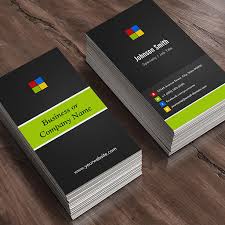
Oh, the age old business card! It looks so small and innocuous, isn’t it? And yet, this little piece of paper can change the outcome of just about any business meeting. Handing over a business card is an introduction to you, your company and products or services it offers. It is said that first impression is everything in any meeting, and the business card is what makes a first statement about your business to potential client, customer or vendor. So how do ensure the business card that represents your company is as impressive as the business itself? Here are some alternate ideas for business cards made out of non-traditional materials.
Wood
A new design idea, for some, is the wooden business card. It’s not like its traditional counterpart in that this card is literally made of wood, not paper. Sure, they are both vaguely made of the same materials, but this is where the similarities end.
Wooden business cards are warm, inviting, and perfect for a variety of hospitality-based businesses. If you run a pub, a bistro, or any kind of restaurant, this is one of the best business card designs you can use.
Your information is typically burned or carved into the wood itself. All manner of shapes and sizes can be used, with the most popular resembling that of the traditional card.
Thinness can be an issue with some cards, but this really depends on the manufacturer. Generally, the nature of this card material makes it a premium item. Expect to pay a high price for it.
Metal
Metal feels cold, but it’s also high-tech and ultra-modern. It’s perfect for computer designers and anyone in the tech industry. Metal lends itself to a variety of shapes and sizes, and it can even be used to create practical tools.
For example, an industrial-styled manufacturing plant might incorporate something like a bottle or letter opener into its design to enhance its “stickiness” – its appeal – to potential clients. In other words, making it practical increases the odds that people will hang onto it.
Paper
Traditional paper products are, of course, what most businesses choose. They can be made from a relatively lightweight 60lb stock, but we wouldn’t recommend doing that. The finer materials incorporate silk and linen, with some companies, like Moo, using what it calls “Luxe.” Luxe is comprised of four layers of Mohawk Superfine paper, giving the card substantial weight and rigidity.
Of course, if you’re just starting out, you might not be able to afford cards at £28.79 per 50 cards. You may only be able to do home printing. But, at the end of the day, if you go with paper cards, the aim is to buy the highest quality you can reasonably afford. It’s a traditional card with a traditional feel. It’s perfect for businesses in the financial services industry, or any industry where the perception of stability is essential. Paper also holds ink well, which is always nice.
Plastic
Plastic is a new material that’s only recently gone mainstream. Plastic is far more durable than paper, but it doesn’t really hold ink well. However, plastic is a more affordable high-tech option (compared to metal) that may appeal to those in the tech industry.
John Sollars has seen how business cards work their magic. A keen business person, he likes to help others by sharing what he has learned over the years. You can find his illuminating articles on a variety of today’s top websites. Connect with John on Facebook and visit StinkyInk for your printing needs.






